Narita Boy and the Double-Edged Techno Sword of Nostalgia
Of the numerous ways to market a pop-culture product such as a video game, nostalgia is probably the sneakiest. It flaunts the promise of reliving the good ol' days, never coming clean about nostalgia's contradictory nature that prohibits its fulfilment.
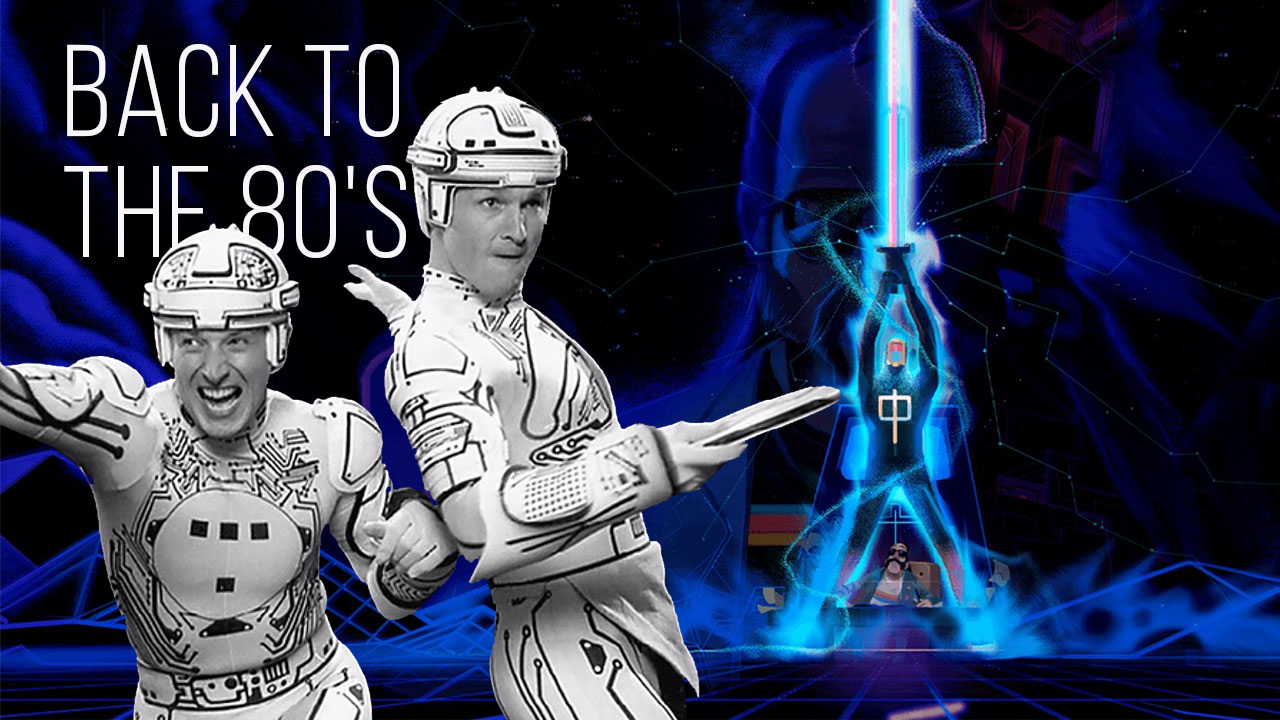
I am a child of the 80’s. Hear me… awkwardly sigh with indifference.
Dammit.
As a dyed-in-the-wool member of Generation X (those born between 1965 and 1980), I am currently caught in a vicious culture war between my parent’s generation (Boomers) and my son’s generation (Millennials). And I’m here to tell ya: us Gen Xers want less than zero to do with this feud. We just want to be left the hell alone while we watch the 21-century, retconned versions of our childhoods paraded before us almost on daily basis. And – truth be told – that’s getting tiresome.
On some level, I get it. The 80’s were rather awesome – especially from a pop-culture perspective. Just off the top of your head, how many classic films, albums, cartoons, TV shows, comics, and, of course, video games, can you name from that era? I’ll wait… because we’re certainly going to need a while.
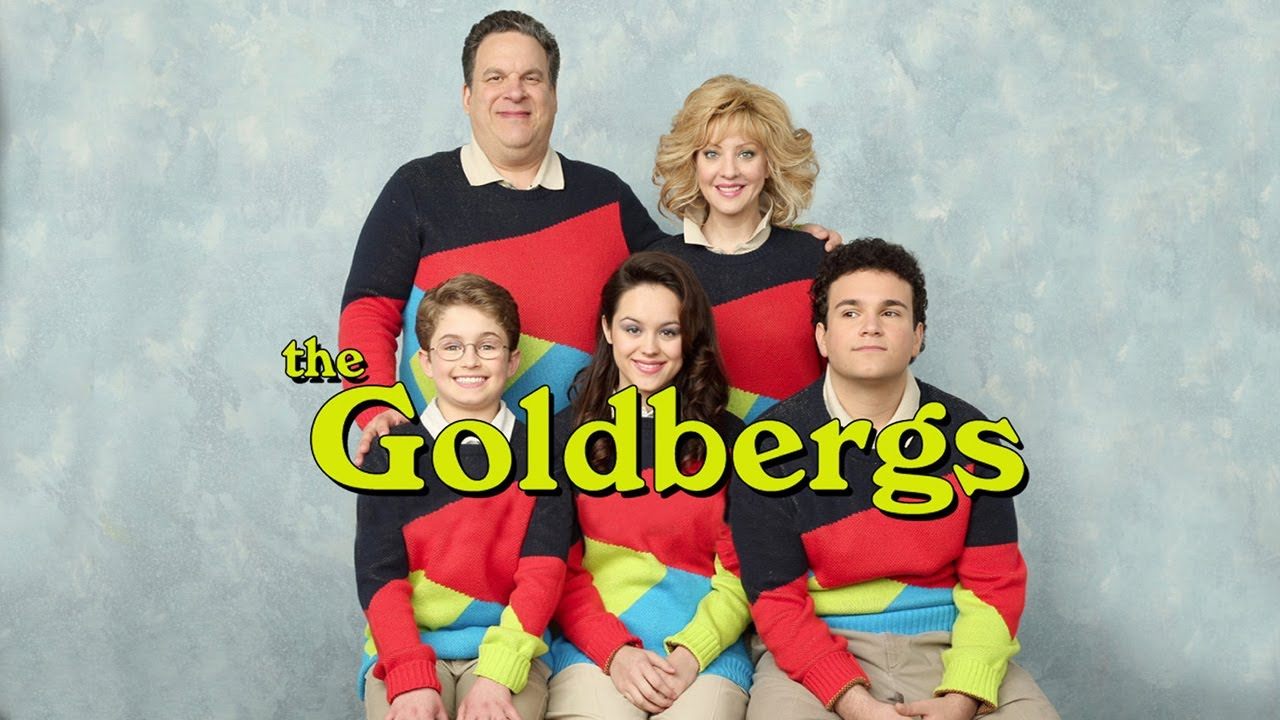
In my mind, this wave of 80’s nostalgia was kickstarted by Ernest Cline’s 2011 novel, Ready Player One, which got a decent movie adaptation by Steven Spielberg in 2018. It was bolstered by the 2013 TV show, The Goldbergs (Fun Fact: series creator Adam Goldberg and I grew up about six miles from each other in the 80’s), and was cemented by Netflix’s Stranger Things which came along in 2016.
But here’s the thing: nostalgia can be both excellent and terrible at the same time. It’s the proverbial double-edged sword. It’s excellent because it gives you the “warmth and fuzzies” for a bit; a wistful buzz, if you will. It’s much like snorting a bump of coke (the 80’s drug of choice), to fly high again, but with that buzz fading away rather quickly, leaving you feeling, well, sad and miserable. Very, very sad indeed, because it seems you’ll never feel that good again… until you get another hit. And that’s when the madness takes over. “Body don’t wanna quit, gotta get another hit,” the late, great Prince Rodgers Nelson once sang on his classic 1999 album.
And for me, the recently released Narita Boy by Studio Koba is exactly that next hit in the interactive entertainment form, rather than any Peruvian powder. It’s an excellent game (if I was formally reviewing it, it would be a solid 9 out of 10) steeped in 80’s nostalgia. At its heart, it’s a Metriodvania which is a genre that, realistically, needs to be paused for a bit, but this one did suck me in simply because it does old-school nostalgia exceptionally well. So much so, that I did a deep dive on all the references (intentional or not) that I caught while playing, and here’s what I noticed.
We’re venturing into SPOILER territory here, so you’ve been warned.
The two biggest old-school references and/or inspirations found in Narita Boy are drawn from both 1982’s TRON (and, in some ways, the 2010 sequel TRON: Legacy as well) and the original Star Wars trilogy. In the first place, the title screen (see below) looks very much like the original TRON movie poster that what plastered all over every movie house in 1982. But it goes deeper than that with TRON, as Narita Boy’s overall plot borrows heavily from TRON (and Star Wars as well) in terms of themes, tone, and story beats, and many have proposed that both Star Wars and TRON are just modern re-telling of the classic “Hero’s Journey” so succinctly defined in Joseph Campbell’s book The Hero With a Thousand Faces.
Without spoiling every wrinkle of the story, I will say that Narita Boy’s writing is quite nuanced and layered, putting some really cool, technology-laced spins on the basic hero’s journey tropes and conveys a more satisfying narrative (in my opinion, of course) than both TRON and Star Wars (A New Hope at least).
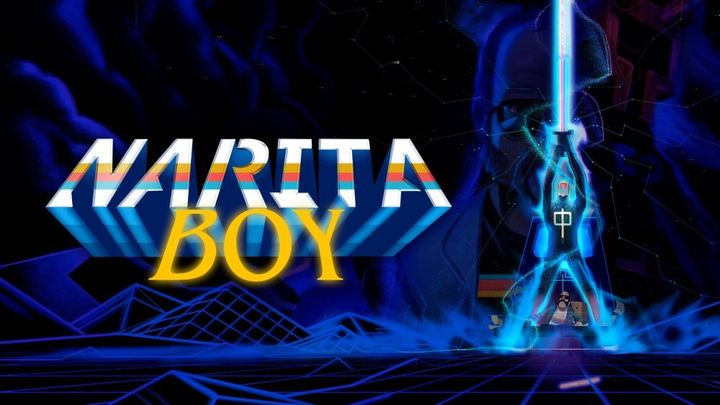
Another area that Narita Boy is heavily influenced by both TRON and its sequel is in terms of the music and/or soundtrack. It’s quite clear that the composer, Salvador Fornieles, who performs under nom de’ musique of Salvinsky, is simulating the synth-heavy sounds of both Wendy Carlos (composer of the TRON soundtrack, among others) and Daft Punk (composers of the TRON: Legacy soundtrack and electronic/dance music legends) throughout the score. The two most obvious examples of this are the main theme (Narita Boy Theme), which sounds almost like a Weird Al version of Daft Punk’s Get Lucky (with assistance from Nile Rodgers and Pharrell Williams, of course), and then, when Narita Boy is in on the Trifurcation path, he encounters the “Synth Sensei/Bard of Trifurcation,” who’s music sounds quite like a lovely Wendy Carlos composition.
Returning to the Star Wars references now: First and foremost, every time Narita Boy dies, a booming voice declares, “REST IN FORCE!” It is also mentioned many times in the dialogue that the Trichroma and/or Force is “strong in you.” The Techno Sword (main weapon in the game – a sword comprised of three light beams) is clearly very lightsaber-inspired and, to top things off, the Creator (Lionel Pearl Nakamura... your father) is seduced by the dark, red code of HIM – the main antagonist of the game who’s, you guessed it, quite Sith and/or Darth Vader-like.
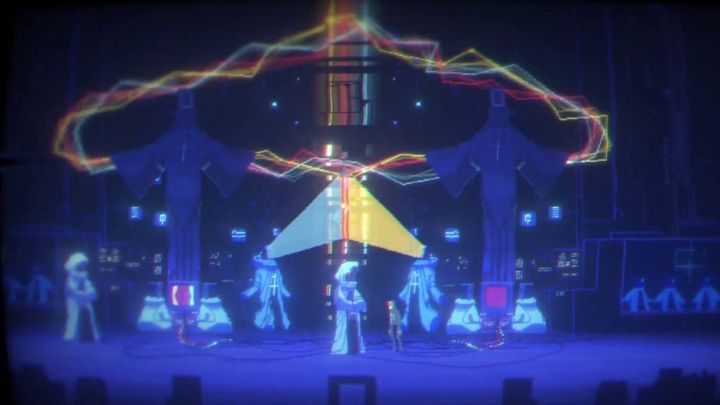
More (mostly 80s) nostalgic allusions I came across in Narita Boy are:
- All through the game, the right and left hand corners of the screen will emulate a fake tracking/tuning effect that old antenna based, CRT TV's used to do.
- 3.5” floppy disks are icons used for keys, titles, power ups, and information; a Walkman is the auto-save icon.
- The graphics have the neon-hued shimmer of TRON throughout, of course, but are also reminiscent of the classic Amiga title, Another World/Out of This World. This is first noticeable in the horror dimension of Beta Maximum Prime, but permeates the entire experience, especially when it comes to the background art.
- The music in the Hall of the Techno Sword sounds almost exactly like the 80s dancehall hit, “Fascinated.” Narita Boy will also do a variation of the running man dance at certain times which was an 80’s club staple.
- Staying on the topic of music for moment, in the Red Kingdom there is an extended train sequence that Narita Boy has to battle through. The music here is quite similar to the 1978 Oscar winning “Midnight Express Theme” by Giorgio Moroder.
- One section of the game uses futuristic elevators much like those found in the 1984 Epyx title, Impossible Mission.
- The first “Stallion” boss you face off against is named Lord VHS, who wields a staff with an old VHS tape on its crown, and his main attack is to hurl evil VHS tapes at you. No part of this sentence was made up. I swear…
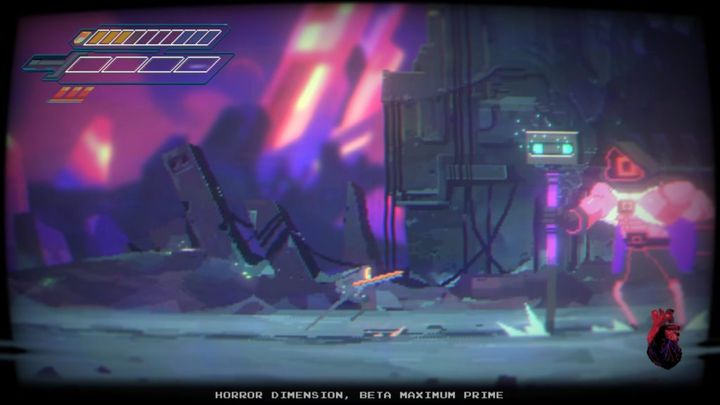
- The in-game “Narita” computers (“The computer made for gamers” in-game text calls it) are shaped like the original Macintosh computers that were released in 1984.
- The main symbol (the “naka” kanji which stands for the center and/or equilibrium) seen throughout the game seems to be based on the symbol of The Greatest American Hero, a TV show that ran from 1981-1983, as well as that Japanese character.
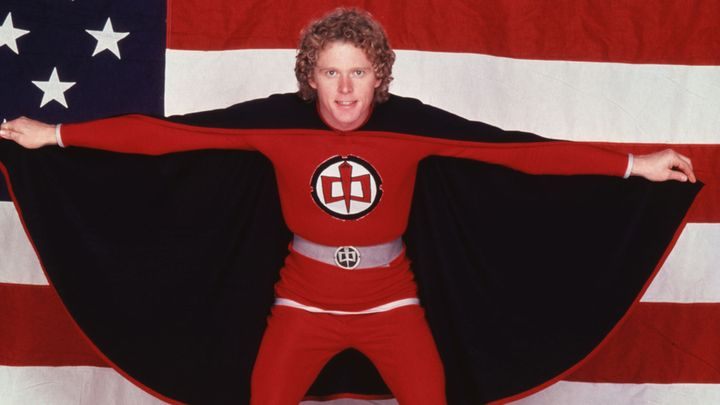
- Much like in games such as 1989’s Golden Axe, there are big hands and/or pointer graphics directing you which way to go.
- All of the NPC characters sound akin to the G1 Transformer’s character, Soundwave, when they speak.

- Another “Stallion” boss, Glaucoma, seems to derive his attacks from Tetsuo Shima in 1988’s Akira, while another (with the badass name of Black Rainbow) seems to be referencing the heavy metal song, Rainbow in the Dark, recorded by Ronnie James Dio in 1983.
- While are on the subject of the Stallions, that in and of itself seems to be referencing Bill and Ted’s (of Bill & Ted’s Excellent Adventure fame) band “Wyld Stallyns.” On top of that, the Yellow, Blue, and Red taiyo power-up avatars talk much like Bill and Ted as their dialogue is peppered with plenty of “dudes” and the like.
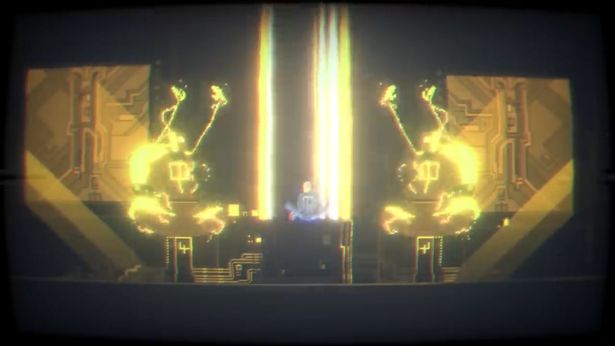
- The Yellow, Desert Kingdom appears to borrow heavily from the Kingdom of Rohan (and its Riders, the Rohirrim) in J.R.R Tolkein’s Lord of the Rings trilogy.
- Another area you traverse in the Yellow world is the Tavern of the Happy Program which clearly seems to have taken a page out of the, well, curious writings of Marquis de Sade.
- Also in the Yellow Kingdom you’ll acquire a “Servo Horse,” and once you do the dialogue tone (and music) shift to something akin of a classic spaghetti western. This Servo Horse will ultimately transform in a “Servo Bot” which Narita Boy will then pilot, much like the mechs found in the 1985 anime series, Robotech.
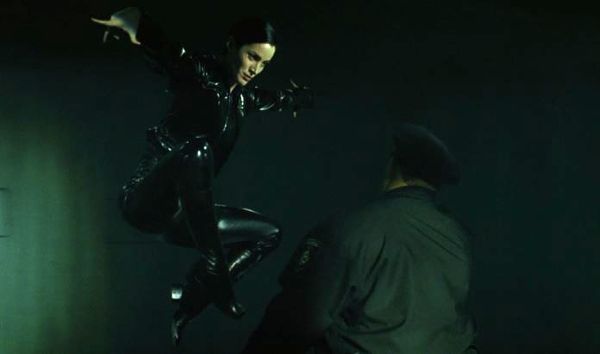
- In the Blue Kingdom, the taiyo avatar/power up poses like a suspended Trinity from the Matrix, and there are old-school, dial-up, landline telephones (complete with the old-school ringing) that Narita Boy uses. These kinds of phones were used extensively in the Matrix as well.
- Not sure why anyone would want to emulate the vehicle sequences from the 1991 NES game, Battletoads, but we have that in the Blue Kingdom while riding the Floppy Board (basically a large disk that has been converted into makeshift surfboard). Ugh. Double ugh.
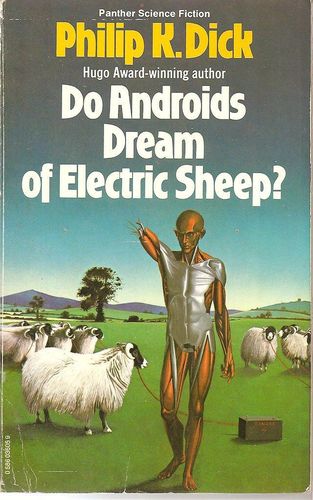
- There’s also a lighthouse keeper in the Blue realm who speaks of “electric sheep.” This certainly is a sly reference to the 1968 Philip K. Dick novel, Do Androids Dream of Electric Sheep? which was the basis for the 1982 sci-fi masterpiece, Blade Runner.
- Scattered throughout the Red Kingdom (and many other places, quite honestly), are parts of the Glove Scribe which act as obstacles and/or impedances more than anything, but if you look at them closely while you are bounding over them, you’ll see that they resemble the infamous Nintendo Power Glove which, of course, is so bad.
Author John Corey Whaley once wrote:
In that moment, I understood what they say about nostalgia: that no matter if you're thinking of something good or bad, it always leaves you a little emptier afterward.
And as I’ve found myself delving deeper into the retro video game scene over the past few years, I can’t help but agree with that sentiment. I don’t like that I agree with it, but I’ve always been one to call a spade a spade. Chasing your past, especially by re-acquiring rather expensive pieces of circuitry and plastic, is a fleeting thing, no doubt. But, luckily, there are experiences out there like the sublime Narita Boy that frame nostalgia in such a positive way that you can’t help but feel good about it.
At least for a tad bit longer…
